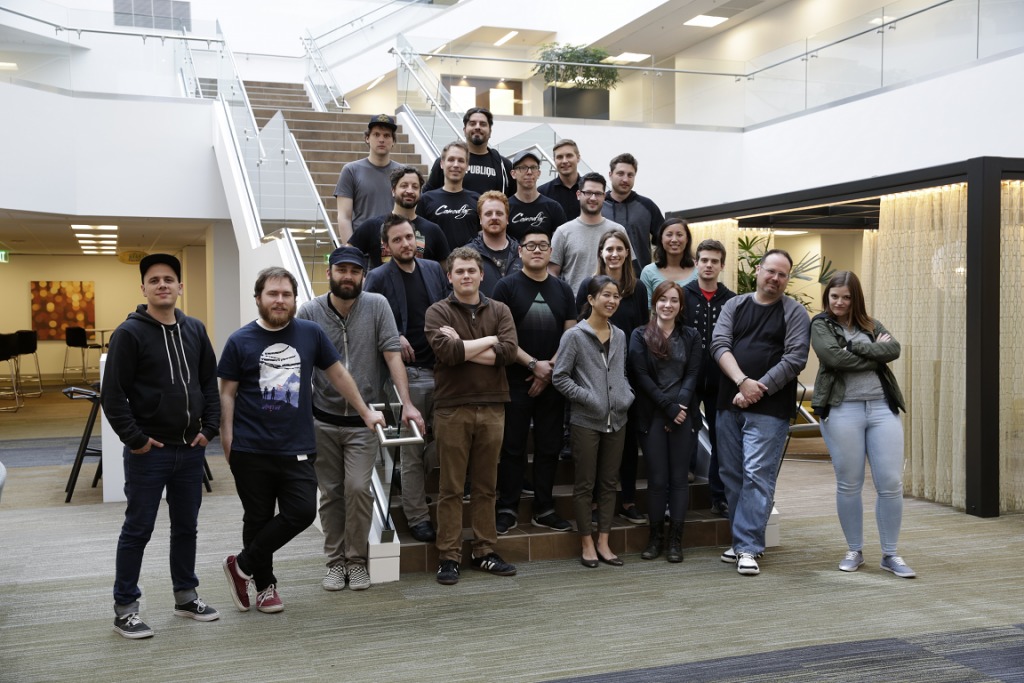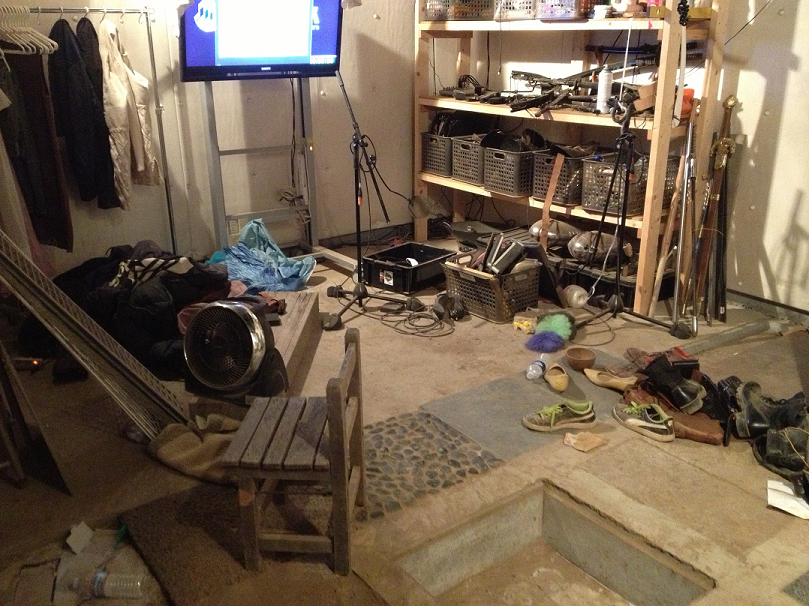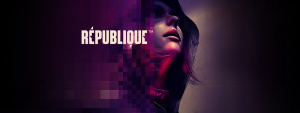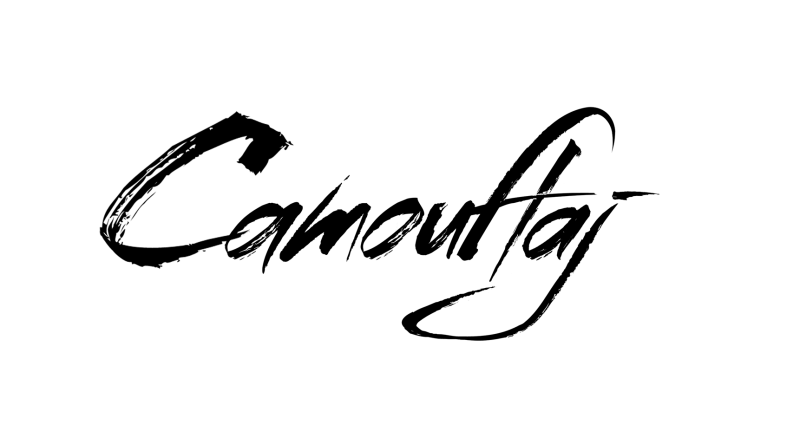Camouflaj’s République Innovates with ADX2
An Interview with Audio Director David Liu
Founded by former Halo 4 creative director and METAL GEAR SOLID 4 producer Ryan Payton, Camouflaj is a Seattle/Bellevue-based game studio committed to developing games that are deep, sophisticated, entertaining, and imaginative. Developed by Camouflaj’s veteran creative team, République is a thrilling, critically acclaimed, stealth-action game that explores the perils of government surveillance in the Internet Age. Audio director David Liu, formerly a member of the Halo 4 audio team, used CRIWARE ADX2 to shape the Republique audioscape to “fit squarely in the middle between the subtle, cerebral sound design of Japanese titles and the bombastic approach to many Hollywood produced games.” David shared some revealing and inspiring insights with us in this short interview.
République is driven by a rich story. How did the story inspire and influence the direction for VO, sound, and music in the game?
Throughout production, director Ryan Payton, writer Brendan Murphy, and I would often collaborate and bounce ideas around of how each facet of the République world would sound. The script that Brendan wrote evokes a highly oppressive and claustrophobic tone, and with most of the gameplay taking place on CCTV footage and cell phone recordings, the soundscape and music had to reflect the feeling of being caged in—helping players empathize with our protagonist, Hope. Early on in our Kickstarter campaign, we set our goals very high to pursue a AAA experience for mobile devices, which allowed for the likes of Rena Strober, Dwight Schultz, Jennifer Hale and David Hayter to lend their voices and talent in helping bring to life their characters in République. Their performances helped mold and influence not only our story direction and character development, but also how certain characters animated and acted in the world.

Generally, what is the role of music, sound, and VO in a stealth-action game like République?
Music plays a vital role in telling players how they’re performing at present, whereas sound and voice can clue players in on how to either pursue or avoid risk. There are also moments throughout the game where République utilizes the lack of music, sounds, or voice to help draw anticipation and create pockets of audio space for players to plan ahead. Too much audio all the time becomes fatiguing, so with the game’s use of the game’s “OMNI View” hacker mode, players are able to suspend time and pause character movement, as well as audio and all other concurrently playing ambient audio.
What was your creative approach to music and sound design creation? Did you work with external composers and sound designers?
Our main approach in making the narrative come alive was by way of informing players through our in-game radio plays, which we internally refer to as “Point of Interest” (POI) scenes. Voiceover performances were extensively used to inform the player as to how best direct Hope’s escape from the oppressive world of Metamorphosis. There is a total of 198 “secretly recorded” POI that spans over three hours and twenty-seven minutes in play duration that help immerse players with stories of inhabitants in our Orwellian fiction. POI are also meant to help guide players towards uncovering the truth of Hope’s journey and escape, with each episode providing perspectives and themes that expand upon the protagonist and the secret fictional nation.
To accomplish such lengths, we worked closely with narrative designer Nathan Scott to hash out every minute detail of each recording: Where is the microphone placed? What kind of microphone is it? Where and when will the recording take place? Is the recording old, or recent? Is it noisy around where the conversation is taking place? What kind of weather is it? Will they be walking and talking, or are they sitting down? The list of questions depended on the initial draft delivered by Brendan, but once these details are confirmed and everyone signs off on what they’re assigned to design, we, as sound designers, take on the role as storytellers.
Most, if not all of the in-game sound design was generated in-house with some external help from a Japanese studio called Forcewick, who assisted with a lot of the cinematic Foley. For République, the audio team consisted of (not all at the same time,) four very talented and indispensable audio contractors: Noa Lothian, Rob Pearsall, Tabitha Doonan, and Chris Burgess. They added a personal touch as to how they imagined each character, vignette, cinematic, and in-game recording sounded. The music was composed and mastered off-site, thanks to the very talented Zinc LeMone. Our music direction changed with the theme of each episode, so the first episode sounded a bit more cold, ambient, and synth-like, as opposed to Episode 2, which featured more piano and orchestral instrumentation. Depending on availability, Zinc LeMone would drop by the Camouflaj office to observe and take in what the team has envisioned for the episode, from concept art to line-by-line story beats from our writer. It was vital for our composer to be clued in on every detail of the game, so that the music would be a natural fit for the narrative.

How did you approach the voice talent casting, directing, and recording?
We were very lucky to have Kris Zimmerman Salter director the voiceovers of the game. Together we auditioned and cast based off of Kris’ suggestions and recommendations. Then we’d start recording every few months, based on our production schedule for each episode, and we’d sometimes schedule make-up sessions for any schedule conflicts, as well as any edits to our script. During scheduling, we often pushed for Kris and Formosa Interactive to have our talent perform in the same booth as much as possible, to help make the interactions of our talent feel more genuine and alive.
How was your experience using CRIWARE ADX2 to implement République game audio? Did you use ADX2 in any creative or unique ways for music, sound, or VO playback?
Using CRIWARE’s ADX2 is relatively easy after my experience working with Audiokinetic’s Wwise and Firelight’s FMOD. I found many similarities with alternate audio middleware systems in how Cues play essential roles in audio playback behavior, akin to Wwise’s Container and Event system, but combined as an all-in-one; then drawing a partial parallel that Cues are stored in Cue Sheets, whereas Sounds/Events are stored in Sound Banks. After careful examination of the documentation provided, lots of experimentation, and support from CRIWARE’s technical support team, I was been able to accomplish many amazing sounding dynamic ambiences and music through the use of ADX2’s AISAC real-time parameter control and lots of ‘Subsynths’ set to randomly trigger. Additionally, I took full advantage of being able to manipulate down to each sound asset regarding how I’d like the pitch and volume randomization to play, the weighting of each randomized asset and cue, and how their envelopes are shaped. There was also considerable ease of massively affecting and categorizing large amounts of cues, and creating different REACT behavior ranging from auto-ducking, to triggering different AISAC interactions between cue categories. Lastly, the ability to pull up cue sheets in a spreadsheet (.CSV) format is far more desirable than nested work units in something like Wwise. The workflow requires less clicking, traversing in-and-out of submenus, and allows for more mass editing of randomization parameters, compression settings, etc.
Looking forward to your new projects and emerging platforms like VR, what will be the most audio middleware functionality and features for Camouflaj?
I know that with my suggestions and answers in this day and age of VR development, somebody will have already thought of, patented, and released some sort of beta for me to try for a limited 30-day license, but I would suggest for middleware to start thinking of providing a means to allow users to choose their own, or preferred HRTF profiles, as well as continuing support for all current and upcoming VR platforms.



